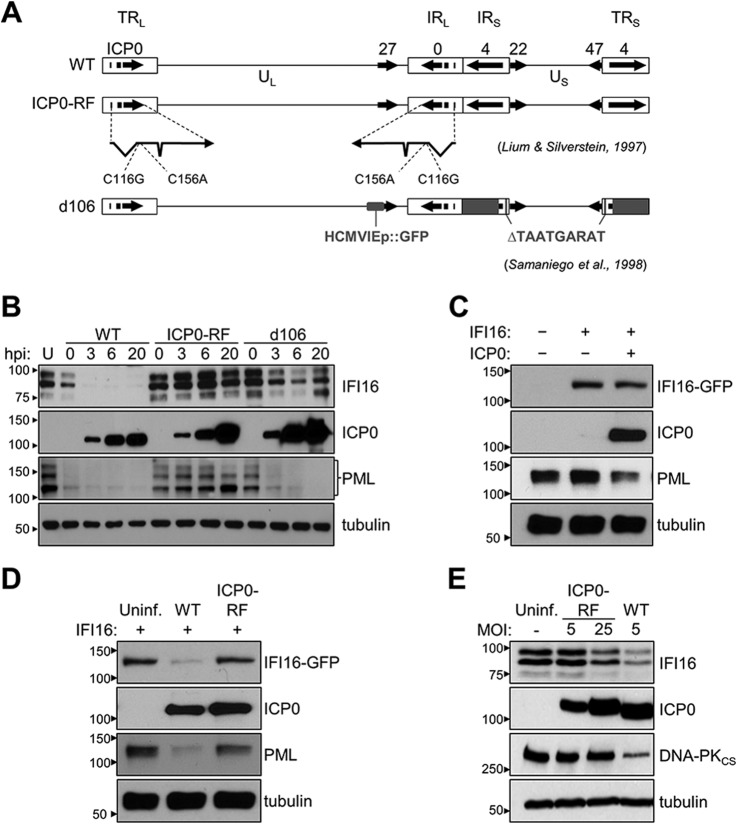Fig. 3.
ICP0 contributes to, but is not sufficient for, the degradation of IFI16 during HSV-1 infection. A, schematic of WT HSV-1 genome and the immediate-early gene mutations present in the ICP0-RF and d106 strains. The genome encodes unique long (UL) and unique short (US) sequences (black line) and inverted repeat sequences (IRL and IRS) flanked by long (TRL) and short (TRL) terminal repeat sequences (white boxes). The immediate-early genes are depicted (black arrows showing direction of transcription). The ICP0-RF strain is deficient in functional ICP0 protein and contains C116G and C156A substitutions in each copy of the ICP0 coding sequence. The d106 strain is deficient in functional ICP4, -22, -27, and -47 proteins and contains a transgene cassette with a GFP reporter gene under the control of the HCMV immediate-early promoter (HCMVIEp) substituted into a partial ICP27 deletion (smaller solid gray box). Deletions (larger solid gray boxes) in ICP4 and the promoter element region of ICP22 and -47, TAATGARAT, result in the loss of these functional immediate-early proteins. B, protein levels of IFI16, ICP0, and PML in HFF cells after infection with WT HSV-1, ICP0-RF, or d106 at various hpi (m.o.i. = 10) were measured by Western blot. PML isoforms are highlighted with a bracket. U, uninfected. C and D, protein levels of IFI16-eGFP, ICP0, and PML in IFI16-eGFP inducible HEK293 cells (IFI16−/+) (C) with and without the transient expression of ICP0. Non-expressing ICP0 cells (ICP0−) were transiently transfected with mCherry (D) and uninfected or infected with WT or ICP0-RF HSV-1 at 4 hpi (m.o.i. = 10). E, protein levels of endogenous IFI16, ICP0, and DNA-PKcs in HFF cells uninfected or infected with WT or ICP0-RF HSV-1 at 4 hpi and at the indicated m.o.i. Uninf., uninfected.

